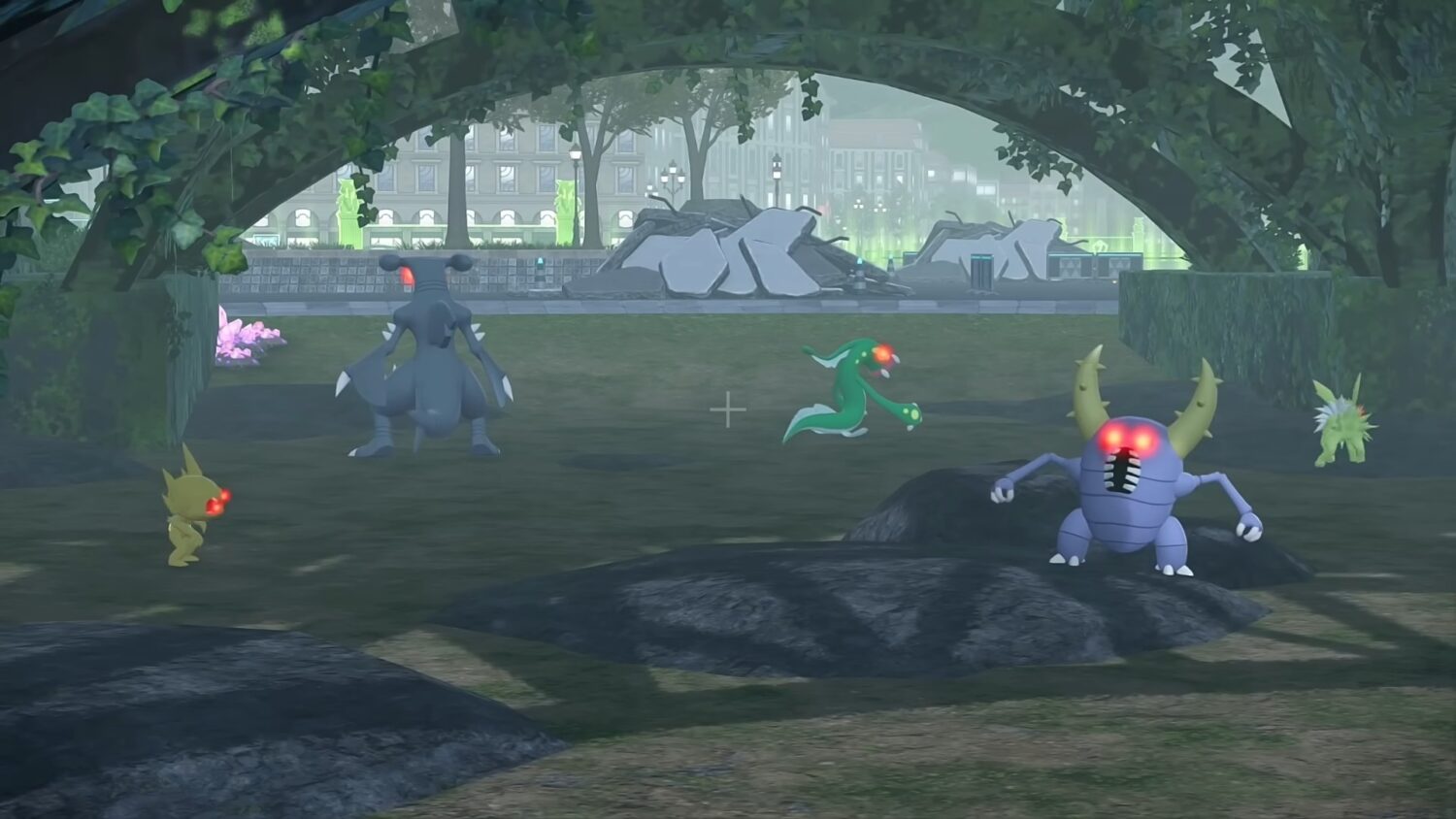
Summary:
Shiny hunting in Pokémon Legends Z-A gets turbo-charged thanks to a Wild Zone 20 routine that multiplies Alpha spawns to six at the same time. The flow hinges on how the game anchors active Pokémon, when it refills empty slots, and how hard saves preserve placement. By nudging the two default Alphas away from the tower, saving outside the zone, and reloading at specific distances, you can duplicate spawn points until six Alphas sit at the entrance. From there, it’s simple: reroll all six by resting on a bench or fast traveling, then repeat until those sparkles appear. We explain why the trick works in plain language, outline the exact steps with timing cues, share controller and camera settings that reduce mistakes, and add safety checks so progress doesn’t get wiped by day/night transitions or accidental zoning. Expect practical advice for stubborn ranged Alphas, a troubleshooting list for common hiccups, and a risk overview covering patches, soft locks, and map pins. If you’re aiming for jumbo shiny trophies or just want faster checks per minute, this walkthrough turns Wild Zone 20 into your most reliable loop—clean, consistent, and shockingly fast once it’s set up.
Pokemon Legends Z-A – Wild Zone 20 method
The Wild Zone 20 method takes advantage of how Pokémon Legends Z-A manages active spawns versus refill logic. When an Alpha is pulled far enough from its source, the game keeps that Alpha “alive” but treats the original spot as open for refills after a reload. By carefully saving outside the zone, restarting, and re-entering, you encourage the map to repopulate the empty positions under the central tower while preserving the “moved” Alphas up by the entrance. Repeat the sequence correctly and you’ll escalate from two Alphas to four, then six. The result is a neat clump of six Alphas parked near the gate for fast checks, while six corresponding spawners exist back at the tower for rerolls. Because each bench rest or quick fast travel forces reroll logic, you’re effectively checking six high-value targets in a single cycle. That’s why hunters favor it: more checks per minute, fewer wasted transitions, and a compact area that minimizes travel time and surprises from random encounters. Understanding the logic makes the routine feel less like a glitch and more like clockwork you can run confidently.
Where to start and how to prep without losing progress
Begin at the Centrico Pokémon Center just above Wild Zone 20. This base is your anchor for healing and quick returns, and it conveniently lines up with the gate you’ll use to tether Alphas at the entrance. Before you touch the spawns, set Daybreak by resting on a bench. Day/night flips can reset progress mid-run, so lock in a time window that’s stable. Next, clear every wild Pokémon between the tower’s Alpha zone and the Wild Zone 20 gate; a tidy corridor prevents stray aggro from breaking leashes or nudging an Alpha back toward center while you’re saving. Have a few Revives and healing items ready—not for battling the Alphas, but for safe fainting later to move them into the final formation. Finally, make sure autosave is disabled if you prefer manual control during setup; manual saves right after exiting the Wild Zone are the ones that “stick” the arrangement you’re carefully staging. With a clean path, a fixed time of day, and saves under your control, the rest of the steps feel far less chaotic.
Exact step-by-step setup to scale from two to six Alphas
Fast travel to Centrico, enter Wild Zone 20, and run to center to tag the two resident Alphas. Pull them toward the gate you used to enter, but don’t rush; keep them leashed and moving until they linger near the small stream just before the exit. Exit the zone and immediately save outside. Restart the game and re-enter—those two Alphas should still be holding near the stream. Now lure them all the way to the gate where you entered, exit again, and save again. Restart once more; the same two should now be stuck at the entrance. Drop a map pin on that entrance spot, run backward until you’re roughly 60 meters from the pin, then save. Restart and re-enter Wild Zone 20: the original tower area should repopulate with two Alphas, while the first pair remains stuck at the gate. Repeat the lure-exit-save-restart cycle, growing the count from four to six. If you maintain gentle movement, avoid despawn triggers, and keep your saves only after exiting, the structure “locks” in place. Once six Alphas sit at the gate, the foundation is done.
Why the 60m pin matters for stable respawns
The 60-meter pin creates a reliable threshold that tells you you’re far enough from the active cluster to avoid force-despawns, yet close enough for quick re-entries. Legends Z-A uses proximity checks and zone boundaries to decide whether to cull or refill. Saving at about 60 meters makes your reloads consistent: the game treats the tower as eligible for refills while keeping your gate Alphas intact. Hunters sometimes eyeball the distance and overshoot; the pin removes guesswork and standardizes placement for your restarts. If you’re seeing inconsistent refills, verify your pin distance and resist the urge to sprint wildly after saving—small deviations can break a clean loop.
How to confirm you performed every stage correctly
Confirmation happens in three tells: first, after your initial stream hold and save, the two Alphas should remain where you parked them on reload. Second, after luring to the gate and saving, the entrance pair should persist on every return. Third, when you save at ~60 meters and reload, two new Alphas should appear under the tower while your entrance pair stays put. If any tell fails, back up a step: return to stream placement, confirm persistence after a restart, then proceed. The biggest culprit for failures is moving too fast between exits and saves or letting ranged-attack Alphas drift back toward center. Keep movement deliberate, and verify between each stage.
Rerolling efficiently: bench rests, fast travel, and faint routing
With six Alphas staged at the gate and six spawners linked back at the tower, your shiny checks become a simple loop. Enter the zone, aggro the entrance Alphas so they’re “registered,” then walk inside and deliberately faint. You’ll wake at Centrico, and when you head back down, six Alphas should now be visible under the tower. Either rest on the bench to reset the pool or fast travel back to Wild Zone 20 to force another roll. Bench resting is ultra-quick and keeps the camera steady; fast travel adds a loading cut but can help with stubborn spawns that resist swapping. Try both—many hunters alternate to prevent weird edge cases. Keep an eye on the day/time; when closing in on sundown, refresh Daybreak so a time flip doesn’t nullify your session mid-reroll. The rhythm becomes: check, reset, check—aiming for consistent cycles that stay under a minute per pass.
Bench resting vs. fast travel: when to favor each
Bench resting wins for speed and stability when the zone is behaving. It eliminates extra loads and makes controller macros easier to manage because inputs are short and repeatable. Fast travel shines when the tower area shows partial swaps or a stubborn pair won’t refresh. The act of zoning can “shake loose” edge-case states and restore clean rolls. If you’re using a macro-capable controller, map a short loop for bench rests and a second, slightly longer loop for travel resets, then switch if you notice patterns slipping. Either way, the goal is uniform timing—the game seems happiest when your cycle cadence is steady.
Camera and UI tweaks that reduce misclicks
Set your camera sensitivity a notch lower than usual, widen the FOV slightly if available, and keep the minimap zoomed so the 60m pin is easy to read at a glance. Bind your quick-menu to consistent slots (bench, map, travel) and clear any non-essential prompts from your HUD. The fewer micro-adjustments you make between cycles, the fewer chances you have to nudge an Alpha off its tether or enter a menu you didn’t mean to open. It sounds minor, but shaving tiny frictions is how you maintain a clean, repeatable loop for an hour or more.
Handling tricky Alphas: ranged attackers, wanderers, and leashes
Some Alphas don’t like to follow; ranged attackers in particular prefer to posture near center instead of chasing. If that happens, reset the bench to force a different pair, then try again. When leading compliant Alphas, avoid sharp turns or sprint-cancel spam that can snap their leash. Gentle arcs keep them invested without pathfinding confusion. If an Alpha returns to center during the stream step, you probably exited too slowly or let distance open too much—re-engage, bring them back to the stream, and tighten your exit/save timing. Remember: you’re shepherding behavior, not brute-forcing it. Smooth movement and quick saves are everything.
Fail-safes and risks: time flips, soft locks, and accidental despawns
The biggest risk to your setup is an unexpected time-of-day change. If the sun flips while you’re mid-agro, the game can reevaluate spawns and undo the structure. That’s why Daybreak starts are the default and why you should refresh the time block before it ends. Soft locks are rare, but if you save with an Alpha half-transitioned between anchor points, you can create odd states that feel inconsistent. The fix is simple: back up a step, re-establish a clean stream tether, and save only after fully exiting the Wild Zone. Accidental despawns happen when you run too far or too fast in a straight line after saving; stick to the 60m rule and keep your exit path controlled. With these small habits, the loop stays rock-solid.
Odds, expectations, and how to keep morale high
Six simultaneous Alpha checks push your expected time to sparkles way down compared to standard routes, but odds are still odds. You’ll see dry spells. Keep a mental counter for cycles and set a checkpoint goal—say, fifty passes—before deciding to reposition or take a quick break. It helps to rotate targets, too; if one Alpha line bores you, use the bench to spin a different pair and reset your brain. The method’s real gift is pacing: consistent timing, tight geography, and few menu hops add up to a relaxing rhythm that doesn’t drain you like cross-map routes do. Stick with that cadence and you’ll collect wins without feeling burned out.
When to pivot to another method temporarily
If you notice repeated partial swaps, Elite modifiers that keep re-rolling the same personalities, or persistent misbehavior from ranged Alphas, pocket your progress and spend twenty minutes on a different shiny target or a charm-friendly route. Coming back “cold” often resets whatever subtle timing quirk was plaguing you. Variety keeps the hunt feeling fresh and protects your patience, which is just as important as your odds per cycle.
Controller, macro, and accessibility tips for longer sessions
Macro-capable pads can automate bench rests or quick travel loops with modest, safe inputs—nothing fancy, just predictable button taps spaced a beat apart. Keep delays generous so a single lag spike doesn’t desync the sequence. Remap sprint to something comfortable for long holds, and consider toggles for players who prefer less finger strain. Audio cues help: listen for aggro roars at the gate and the healing chime at Centrico to confirm you’re on tempo without staring at the screen. If you’re running handheld, a stand plus a slight brightness bump reduces eye fatigue and makes the minimap pin easier to read. Comfort translates directly into cleaner execution.
Common troubleshooting: what to do when something feels off
If Alphas vanish from the gate, you likely crossed too far past your pin before saving or you saved inside the zone by mistake. Rebuild from the stream step and verify persistence after each reload. If the tower only repopulates one Alpha instead of two, try a single fast travel reset; failing that, restart from the four-Alpha stage and test again. If your bench restores but nothing changes under the tower, wait a breath between button presses—the game sometimes needs a heartbeat to commit state changes. Stubborn ranged Alphas? Bench again to force a new duo; don’t wrestle with uncooperative behavior when a clean reroll takes seconds.
Ethics and patch awareness: using the method responsibly
Shiny hunting thrives on creativity, and this routine leans on in-game systems without modding or memory edits. It’s fair play for most of the community, though some prefer “pure” routes. If you trade shinies, be upfront about your method; transparency keeps expectations healthy. Stay tuned to patch notes and community checks—updates can affect spawn persistence or bench timing. So far, community confirmations indicate the routine survives recent updates, but it’s wise to verify after every patch before sinking a long session. If a future version soft-patches parts of the loop, the underlying logic—anchor, refill, reload—will still suggest new variants worth testing.
Targets worth the time: high-impact Alpha hunts in Zone 20
Wild Zone 20’s central pool rotates through several crowd-pleasers that look incredible as shinies, and the Alpha scale makes them instant showcases on Switch 2’s sharp display. Prioritize lines with clear visual shifts so you can identify sparkles fast even in bright Daybreak. If you’re building a themed roster—dragons, metals, or mascot picks—cycle until you land the right two at center before you begin the lure. That tiny front-load saves frustration later and lets your eyes snap to the right silhouette across many cycles. The more confidently you can scan, the faster each pass feels.
Storage, labeling, and “don’t lose your shiny” habits
Keep a dedicated page for “flagged” encounters—anything that sparkled but you postponed catching to maintain the loop. Label boxes by date and species, and drop a held item or mark on anything you intend to showcase later. If your loop has banked multiple shinies across a bench-rest sequence, don’t panic; take a breath, walk in clean, and secure one at a time. A little organization prevents those heartbreaking moments where a shiny slips through because a menu misclick ate your chance.
Smart use of fainting without wasting time
Fainting to snap the gate group under the tower is supposed to be fast, not messy. Strip out unnecessary heals in the loop and only top up if you botched a run and risk a stray KO that sends you back to the Center without the state you wanted. Most cycles, you can accept the faint quickly and resume the cadence in under a minute. Smooth repetition is what turns this from a clever trick into your everyday shiny engine.
The complete checklist you can glance at between cycles
Anchor at Centrico. Daybreak set. Corridor cleared. Two Alphas leashed to stream, save and restart. Lure to gate, save and restart. Drop pin, back up to ~60m, save and restart. Confirm four under tower with two at gate. Repeat to reach six at the gate, six mirrored under the tower after faint. Reroll with bench or travel, swap if stubborn. Refresh Daybreak before it flips. If anything desyncs, rebuild from the last stable step. Keep inputs steady, camera calm, pin visible, and your loop turns into muscle memory. When everything’s clicking, the tower practically rains sparkles.
Conclusion
Wild Zone 20’s six-Alpha routine turns shiny hunting into a fast, friendly rhythm that respects your time. By understanding why the pieces work—anchors, refills, and reload timing—you gain control over a setup that’s both powerful and surprisingly stable. With bench rests for speed, fast travel for stubborn shifts, and a handful of small safeguards, you’ll check more premium targets in less time and walk away with trophies that feel earned, not random. Keep your saves clean, your pin precise, and your patience steady; the method will do the heavy lifting. When those sparkles finally land, you’ll know they came from a loop running exactly as intended.
FAQs
- Does this method still work after the latest update?
- Yes, community checks following recent patches confirm the Wild Zone 20 routine remains intact. Always verify after any future update by testing the stream step and a single refill cycle.
- Bench rest or fast travel—what resets spawns better?
- Bench rest is quickest for clean loops; fast travel helps when a pair refuses to swap. Many hunters alternate the two to keep cycles consistent and avoid edge cases.
- What if my initial Alphas won’t follow?
- Ranged attackers can be stubborn. Rest on the bench to force a different duo, then repeat the lure. Don’t waste time wrestling with behavior that fights your setup.
- Why do I need a 60m pin?
- It standardizes distance so reloads refill the tower while preserving the gate cluster. Saving too close or too far introduces inconsistent states that break the loop.
- How do I avoid losing a shiny during the loop?
- Keep labeled storage, secure one shiny at a time, and avoid hasty menus. If you bank multiple sparkles, breathe, re-enter cleanly, and catch methodically.
Sources
- Pokémon Legends: Z-A has a new update, but the Wild Zone 20 shiny Alpha exploit still works, GamesRadar, November 6, 2025
- Pokémon Legends: Z-A Player Finds New Alpha Shiny Exploit in Wild Zone 20, TheGamer, November 8, 2025
- Exploit Allows Players To Shiny Hunt Six Alpha Pokémon At Once, NintendoSoup, November 8, 2025
- How to shiny hunt six Alpha Pokémon at the same time, Nintendo Wire, November 7, 2025
- Pokémon Legends Z-A Might Patch This Shiny Hunting Trick, Kotaku, November 3, 2025
- Pokémon Legends: Z-A Has a Shiny Hunting Glitch in Wild Zone 20, Game Rant, November 1, 2025
- How to Get 6 Shiny Alpha Pokémon at ONCE!, Austin John Plays (YouTube), November 2025
- NEW METHOD! Shiny Hunt 6 ALPHA Pokémon at ONCE, Austin John Plays (YouTube), November 2025
- Overloaded Zone 20 is amazing to shiny hunt, Reddit r/LegendsZA, November 2025
- Macro tips for the “6 Alphas under the Tower” trick, Reddit r/LegendsZA, November 2025














